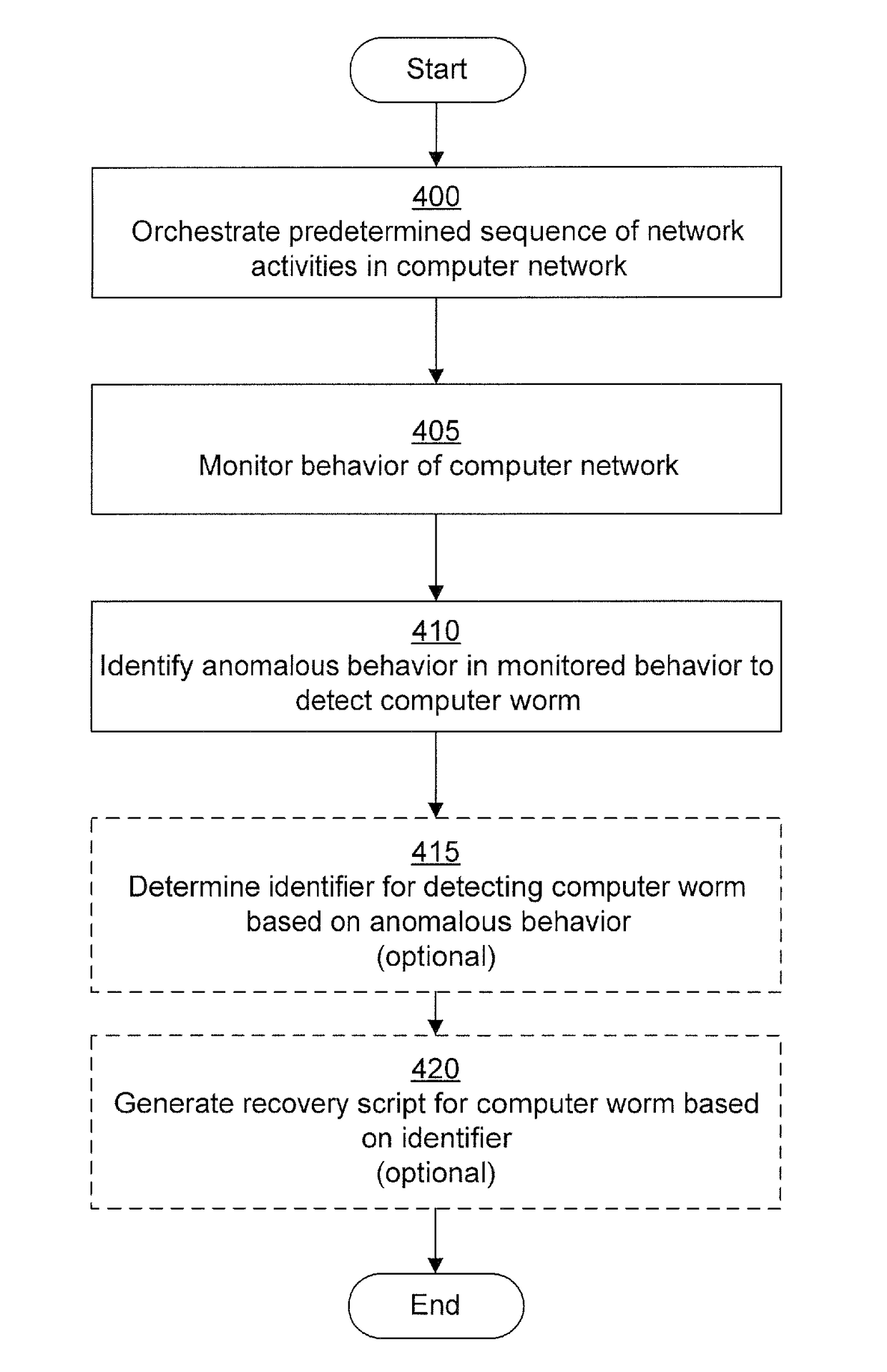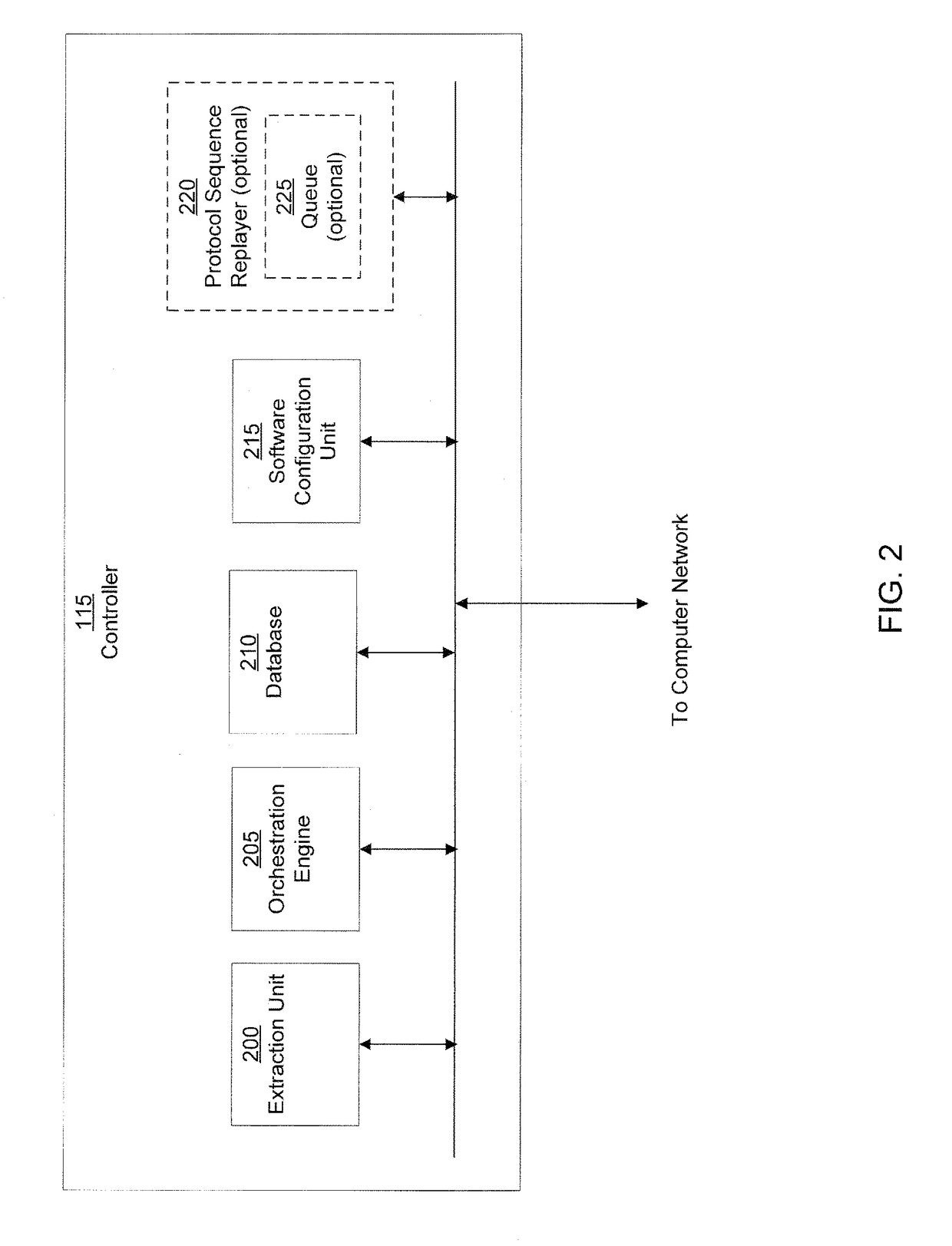System and method of detecting malicious content
a technology of malicious content and detection system, applied in computing, instruments, electric digital data processing, etc., can solve the problems of increasing complexity and sophistication of modern computer worms, difficult to detect computer worms, and difficult to distinguish between ordinary communications traffic and computer worms
- Summary
- Abstract
- Description
- Claims
- Application Information
AI Technical Summary
Benefits of technology
Problems solved by technology
Method used
Image
Examples
Embodiment Construction
[0024]A computer worm containment system in accordance with one embodiment of the present invention detects and blocks computer worms. Detection can be accomplished through the use of a computer worm detection system that employs a decoy computer network having orchestrated network activities. The computer worm detection system is configured to permit computer worms to infect the decoy computer network. Alternately, rather than infect the decoy network, communications that are characteristic of a computer worm can be filtered from communication traffic and replayed in the decoy network. Detection is then based on the monitored behavior of the decoy computer network. Once a computer worm has been detected, an identifier of the computer worm is determined and provided to a computer worm blocking system that is configured to protect one or more computer systems of a real computer network. In some embodiments, the computer worm detection system can generate a recovery script to disable ...
PUM
 Login to View More
Login to View More Abstract
Description
Claims
Application Information
 Login to View More
Login to View More - R&D
- Intellectual Property
- Life Sciences
- Materials
- Tech Scout
- Unparalleled Data Quality
- Higher Quality Content
- 60% Fewer Hallucinations
Browse by: Latest US Patents, China's latest patents, Technical Efficacy Thesaurus, Application Domain, Technology Topic, Popular Technical Reports.
© 2025 PatSnap. All rights reserved.Legal|Privacy policy|Modern Slavery Act Transparency Statement|Sitemap|About US| Contact US: help@patsnap.com



